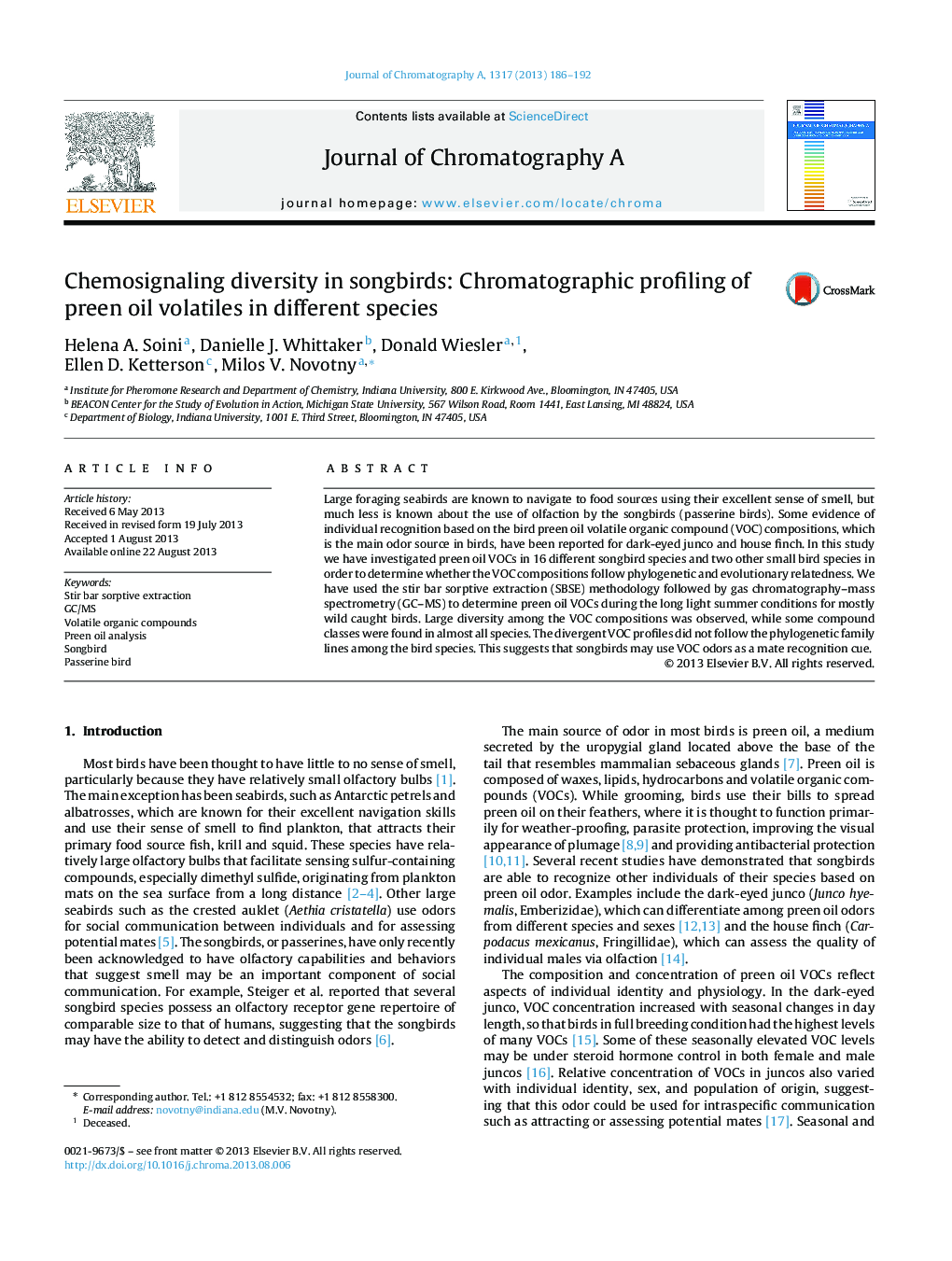| Article ID | Journal | Published Year | Pages | File Type |
|---|---|---|---|---|
| 1203332 | Journal of Chromatography A | 2013 | 7 Pages |
•Preen oil VOCs were compared in 16 songbird species by using SBSE and GC–MS.•The divergent VOC profiles were observed.•Phylogenetic family lines among the bird species did not predict VOC profiles.•The songbird VOC odors may be used as a mate recognition cue.
Large foraging seabirds are known to navigate to food sources using their excellent sense of smell, but much less is known about the use of olfaction by the songbirds (passerine birds). Some evidence of individual recognition based on the bird preen oil volatile organic compound (VOC) compositions, which is the main odor source in birds, have been reported for dark-eyed junco and house finch. In this study we have investigated preen oil VOCs in 16 different songbird species and two other small bird species in order to determine whether the VOC compositions follow phylogenetic and evolutionary relatedness. We have used the stir bar sorptive extraction (SBSE) methodology followed by gas chromatography–mass spectrometry (GC–MS) to determine preen oil VOCs during the long light summer conditions for mostly wild caught birds. Large diversity among the VOC compositions was observed, while some compound classes were found in almost all species. The divergent VOC profiles did not follow the phylogenetic family lines among the bird species. This suggests that songbirds may use VOC odors as a mate recognition cue.
